It is the next day. I took another look at that oak hoop that I bent yesterday, and in general, it doesn't look all that bad.
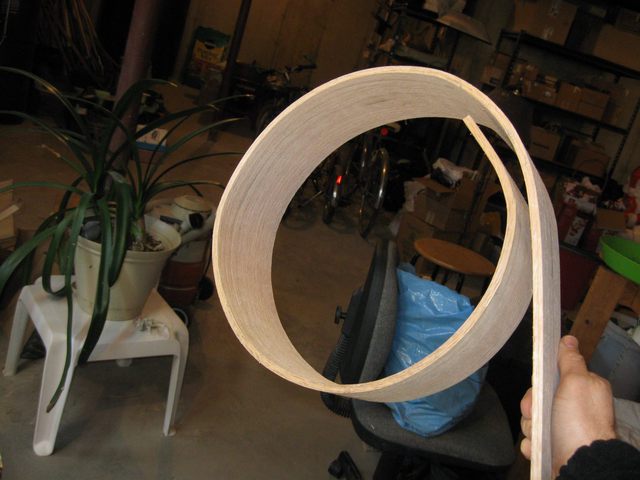
The Bent Oak
The bend is pretty tight and regular. If it did not have those splits it would be a good candidate for a finished hoop. But it turns out that all of the cracks and splits are on one side of the hoop. I might be able to cut it down a bit and save it. The size is OK at just under 12".
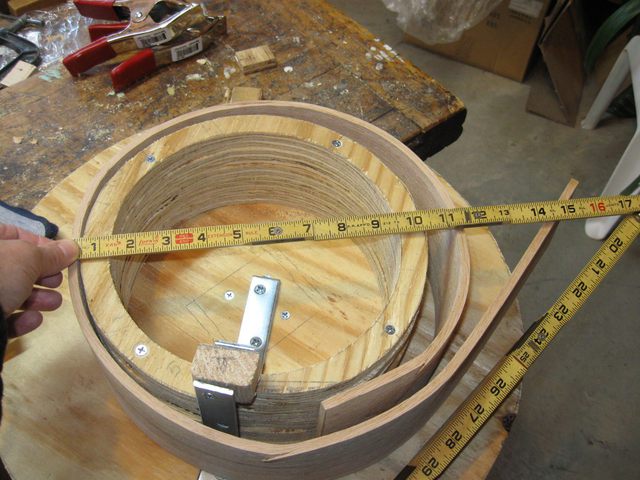
The Hoop Is Twelve Inches Across
I should be able to spring it apart to make a 12" hoop out of it. The bad split is only about 1" into the hoop.
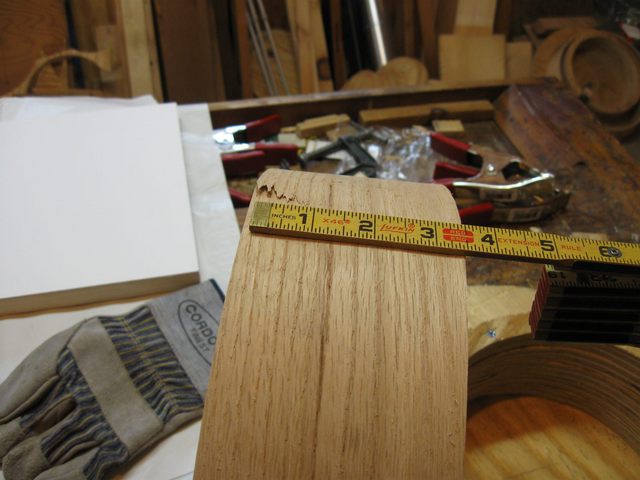
The Bad Split Is About One Inch
That leaves 2 1/2" of solid wood, which is the normal depth for a banjo hoop anyway.
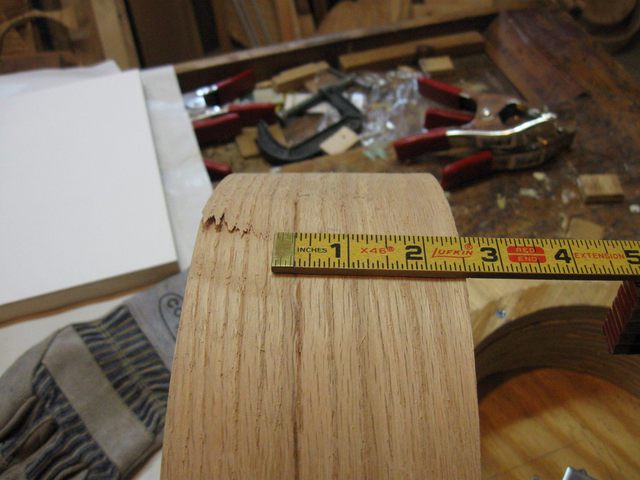
There Is 2 1/2" of Good Wood
So I am going to go for it. I will cut the ends off, slice off the broken bits, and see if I can make a hoop out of it. I marked the ends where I want to cut them off to make a 12" hoop and then I stuck it in the vise.
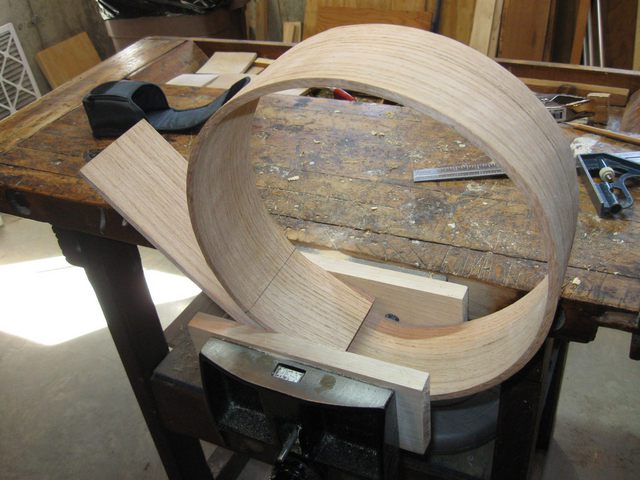
The Hoop is Clamped
I tried to cut the ends off using my dovetail saw, but it was binding in the kerf like my panel saw did.
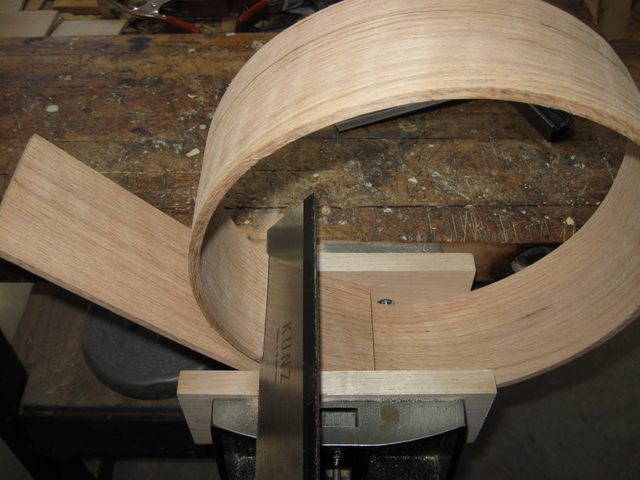
The Dovetail Saw Binds
I got out my mitre saw again and used that to finish up.
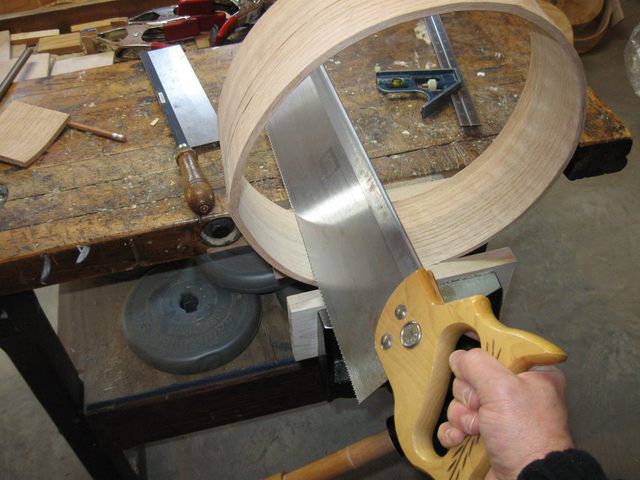
The Mitre Saw Does Not Bind
After I cut off the ends I marked all the way around the hoop 1" up from the bottom and cut that piece off using the saber saw.
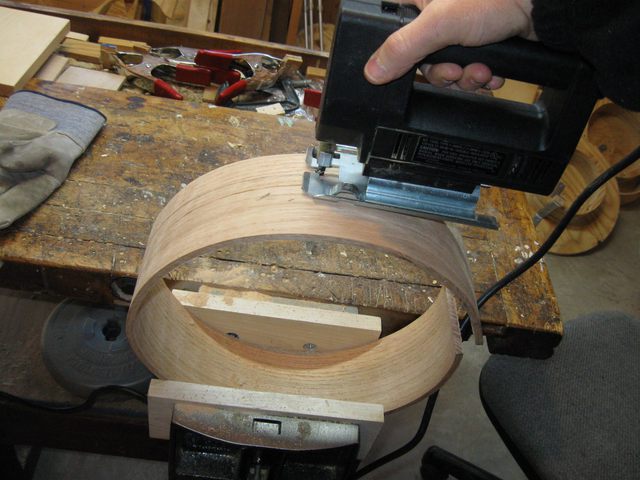
The Saber Saw Slices The Hoop
Here are the two pieces. All of the splits are on the skinny piece on top. The other piece is solid wood.
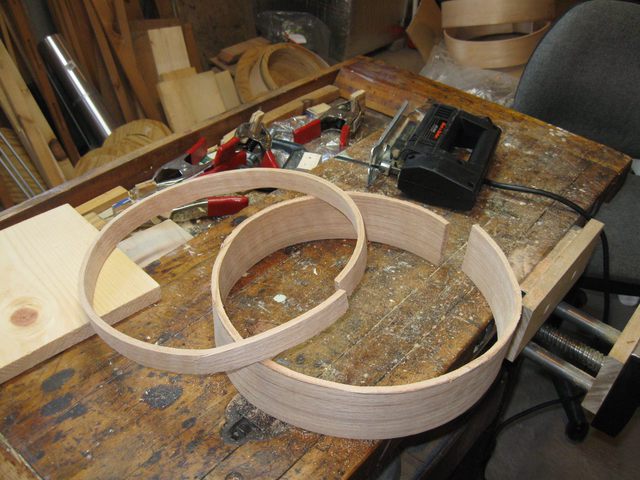
The Skinny Slice Has the Broken Bits
At this point I am going to diverge from standard banjo practice again. Normally, the two ends of the hoop are scarfed at a narrow angle and then glued together, like this:
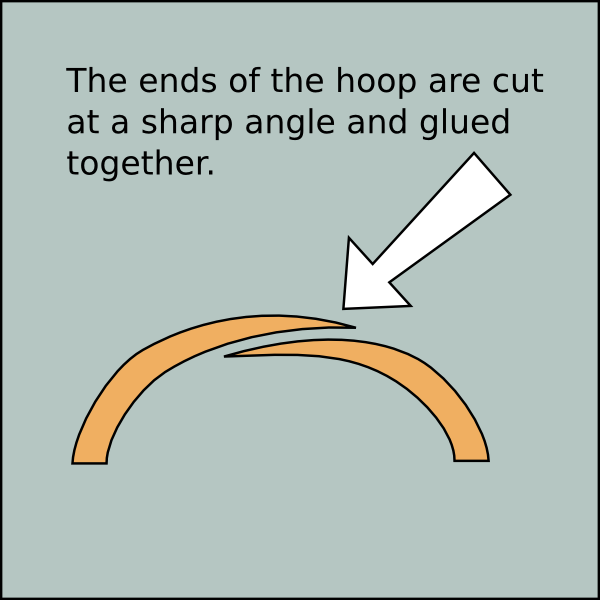
The Ends Are Cut At An Angle and Glued
That technique makes a hoop that appears to be the same thickness all the way around. I do not have the skills or tools to make a scarf joint that is accurate enough to hold.
In my last attempt to make a hoop I made a strap to go across the gap and then glued it. That was a disaster, and the glue did not hold. If I tried to make a scarf joint, I am sure that it would result in an even worse disaster. I would hate to make a hoop and then build a banjo around it just to have the glue let go after it is all done.
As far as fastening technology goes, I am not a fan of glue. It seems like an inadequate and iffy proposition to just stick things together with goo. If you mess up any of the process, it makes a very weak joint. The longevity of the joint depends on so many things like the fit of the two pieces and the age of the glue and the temperature of all of it...
I also do not like nails since they suffer from some of the same problems. They are only a friction fit. You get one chance to pound them in, and then you are stuck with the result. But I digress.
In case you did not notice yet, I am a big fan of screws. Screws make a real mechanical connection between the two pieces of wood. When you tighten the screw, the threads mechanically pull the pieces together. You can take the screws out and then put them back and it all goes back together and it works. So, with that in mind I decided to screw this hoop together into a heel block.
Guitars have heel blocks, so why not put one on a banjo? I made a heel block out of some scrap pine that I had sitting around left over from some of my previous misadventures.
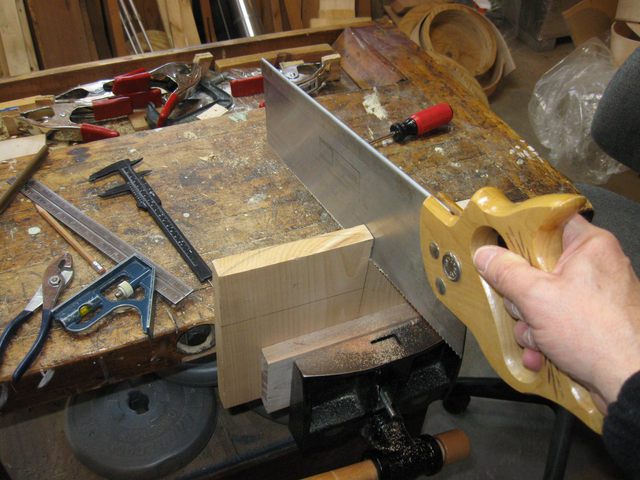
Cutting a Piece of Pine for a Heel Block
In this photo you can see where I placed the hoop down on the end of the block and drew the curvature of the hoop. I have to match that curvature on the heel block.
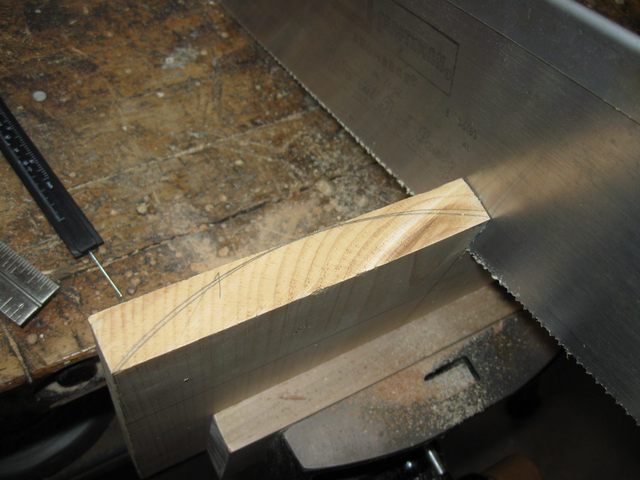
Curve of the Hoop
Using the mitre saw I cut close to the curve to remove most of the wood.
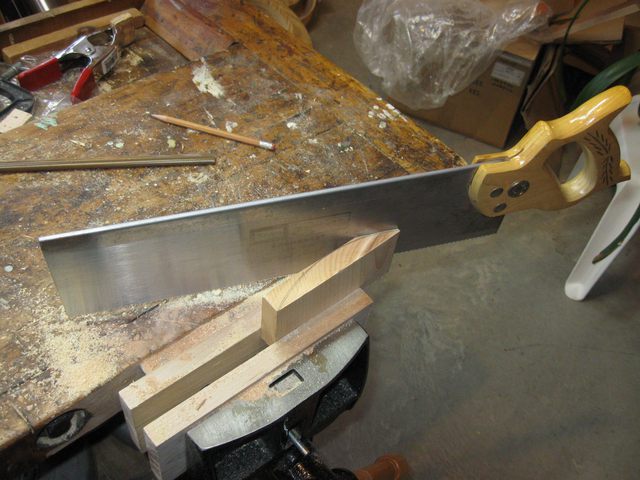
Cutting the Curve of the Heel Block
That made it into a trapezoid shape.
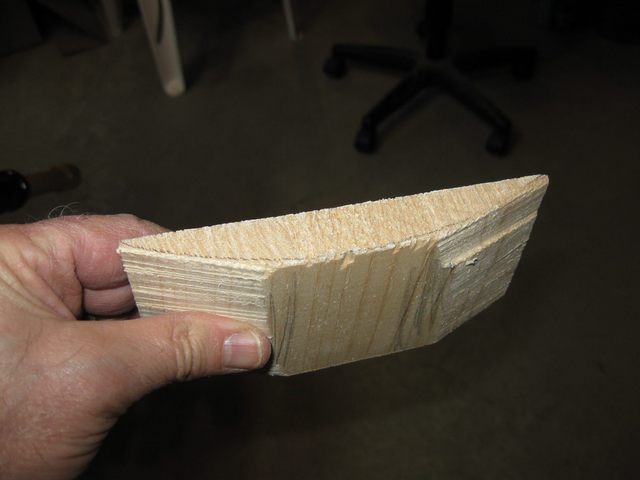
Trapezoid
I clamped the heel block into the vise and used the block plane to cut out the curve.
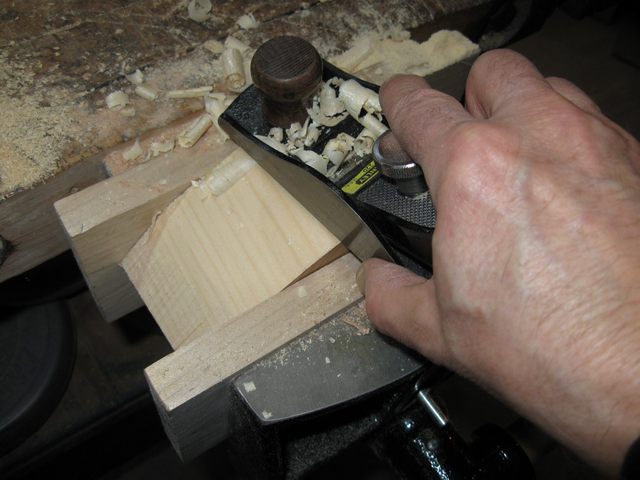
The Block Plane Makes Quick Work of the Pine
I screwed the two ends together using #8 by 3/4" screws, and here is the hoop.
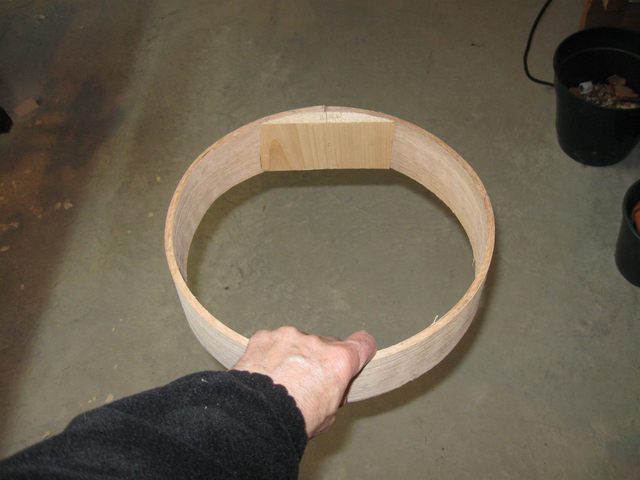
The Hoop
Wow. That was way easier than messing around with glue and clamps and waiting 24 hours just to have the joint fail. The ends of the wood did not line up exactly, as you can see in this closeup. But I can take care of that problem easily.
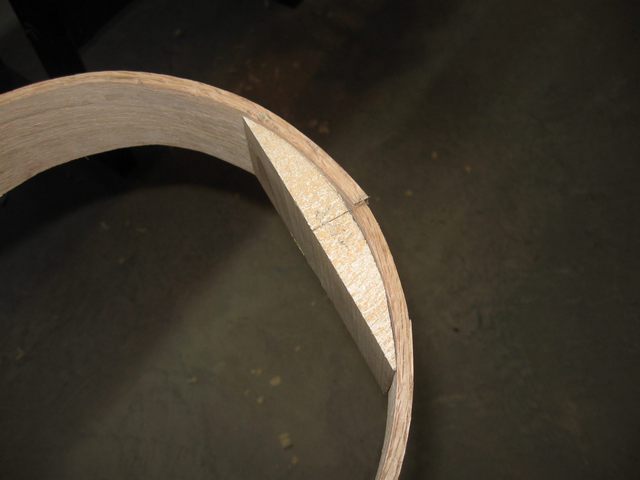
Closeup of the Ends
I measured the hoop to see how I did as far as size goes. It came in at just under 11 1/2" side to side.
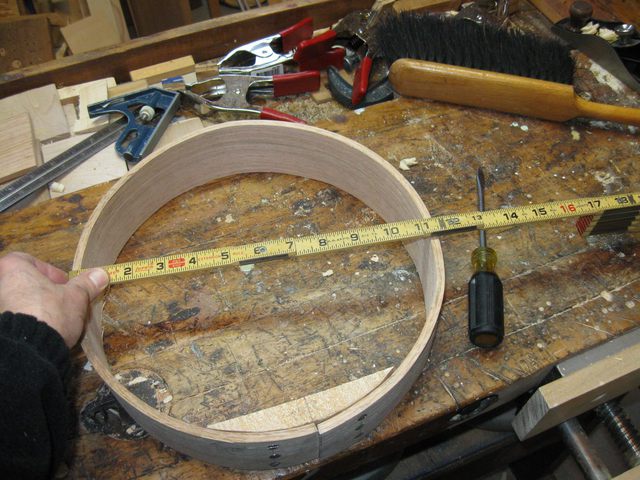
The Width is about 11 1/2"
When I measured it front to back, i.e. neck to tail piece, it was 12"
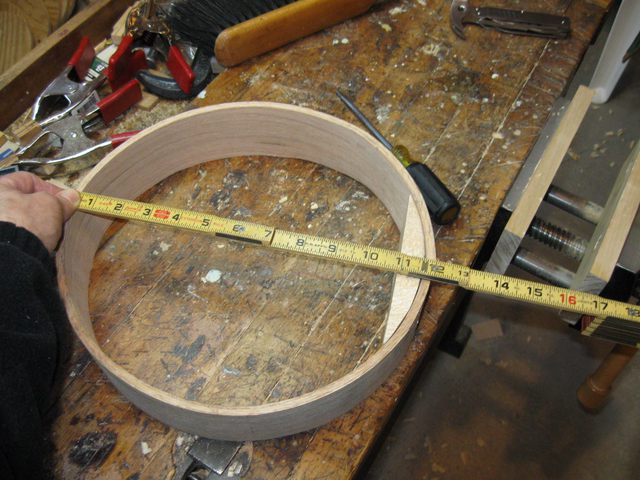
The Front to Back Size is 12"
It appears that the hoop is a tiny bit egg shaped. I don't think that would make it impossible for me to make a banjo out of it. I would stretch a skin head over it, and that does not require a perfectly circular pot like a tension hoop would. It certainly isn't any more asymmetrical than some of the gourds I have used.
Here is the finished hoop.
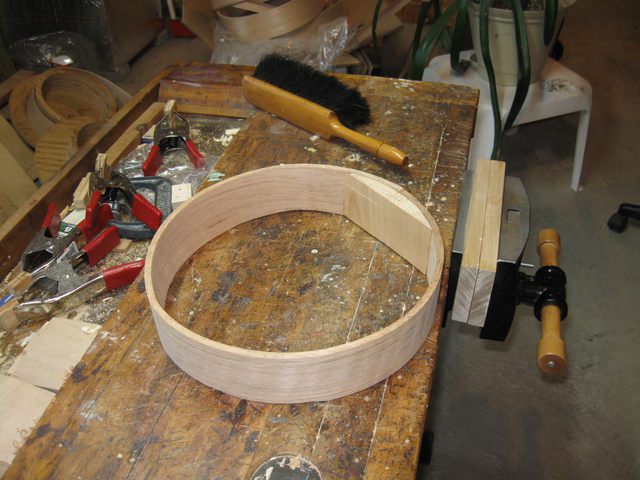
The Hoop Is Finished
That was an encouraging outcome. I finally made a hoop from my own bent wood. I don't know if I will ever make a banjo out of this. I wanted a hoop that is deeper than 2 1/2" so that I can make one with the boomy sound of a gourd. It would also be nicer if the hoop were closer to round and not so egg shaped. I also want a hoop that is larger. I was shooting for a 13" hoop, and this one is barely 12" But it isn't bad for a first try.
I think I will go back to bending some wood to see if I can make one that is larger, deeper, and more round than this one. I might be getting the hang of this finally.
